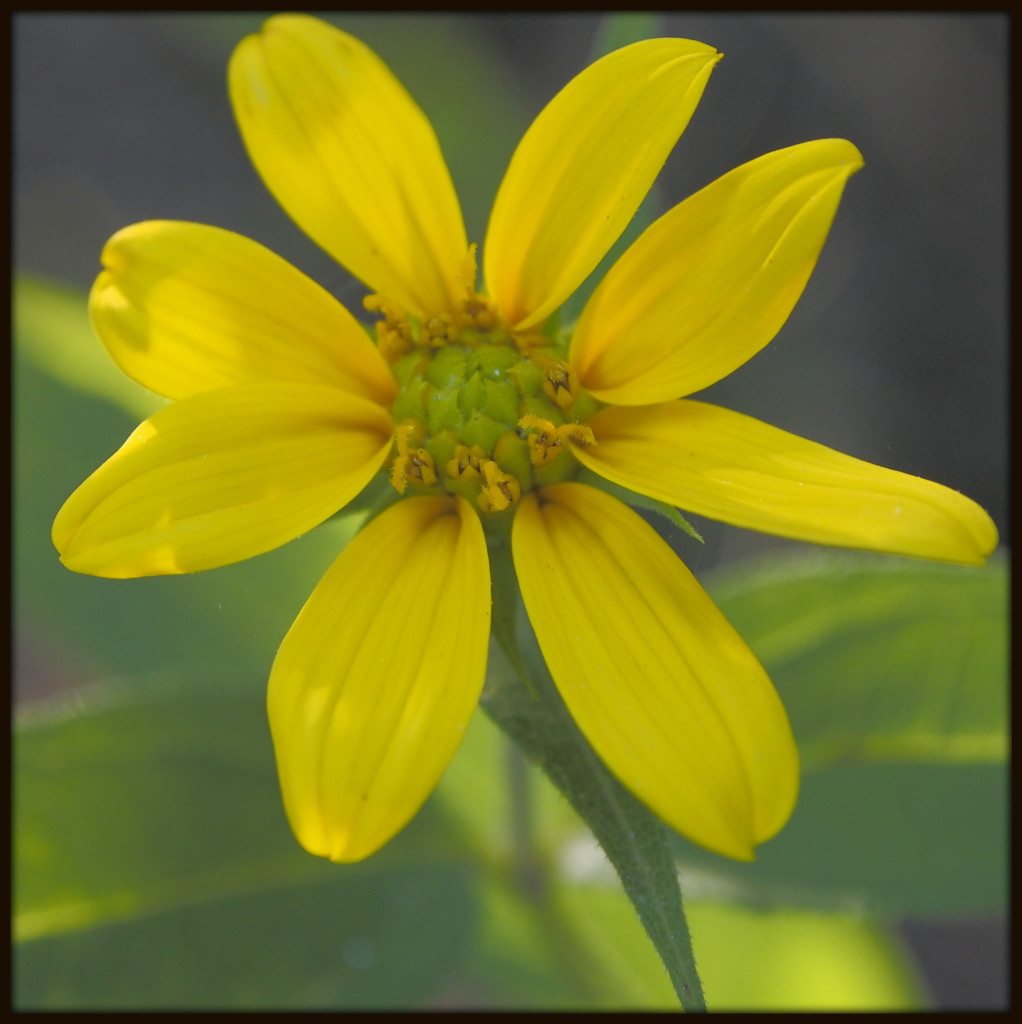A twirling bit of greenbrier tendril catches the light in this mid-afternoon photograph along Piney Woods Church Road. Day 203, and still I encounter new wonders….
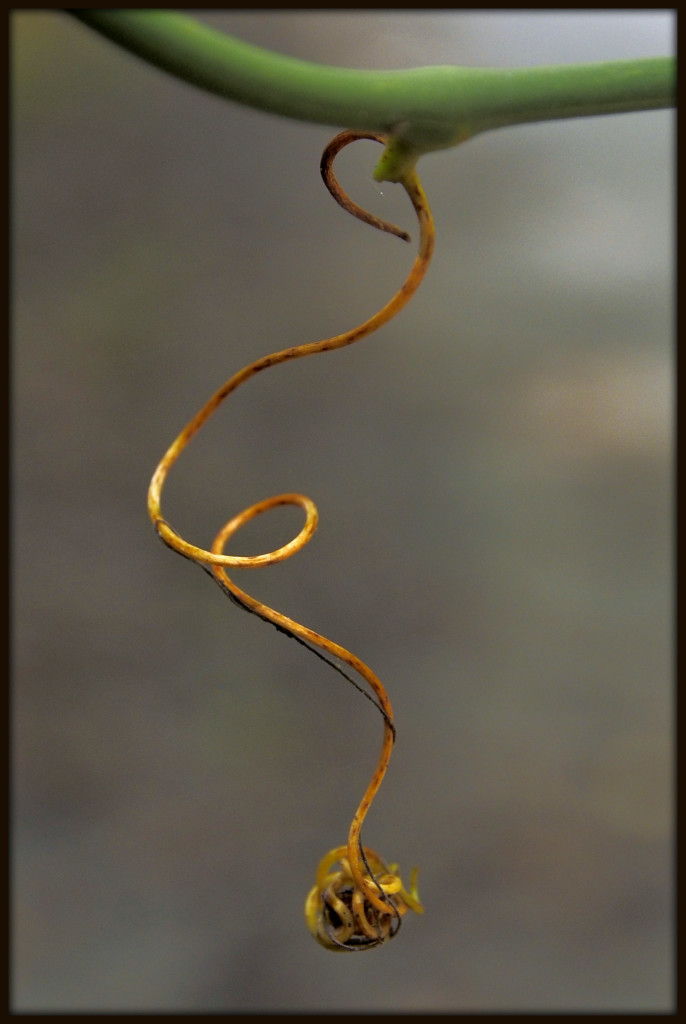
A twirling bit of greenbrier tendril catches the light in this mid-afternoon photograph along Piney Woods Church Road. Day 203, and still I encounter new wonders….

The leaves cling to the trees like jigsaw puzzles with pieces missing. As summer advances, more and more of the leaves get eaten — the edges are no longer smooth, but interrupted by pieces that have been devoured, while leaf interiors develop patches where the green is gone and only a veil of veins, the leaf’s infrastructure, is left.
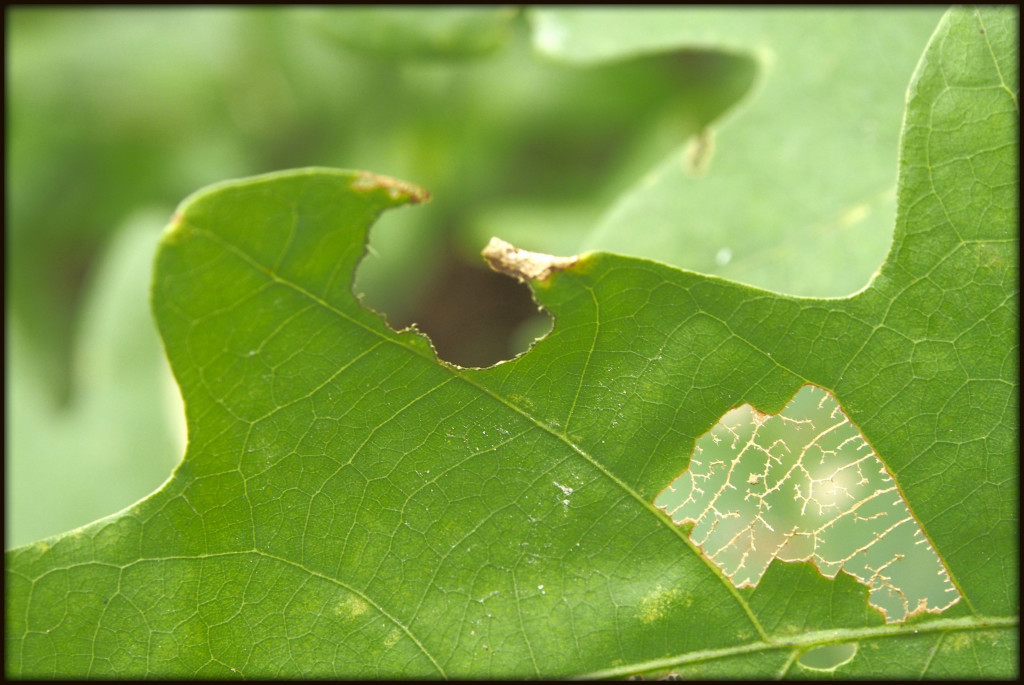
I interrupt the temporal flow of my images with another photograph from Day 201, yesterday. This was the very first photo I snapped as I set off down Piney Woods Church Road after the rain. Valerie saw it yesterday and urged me to post it, commenting upon its three-dimensional quality. So here it is. I continue to be amazed at how many ways there are to look at everyday leaves: grape, sweetgum, water oak….

A greenbrier thorn and tendril, somewhere along Piney Woods Church Road.
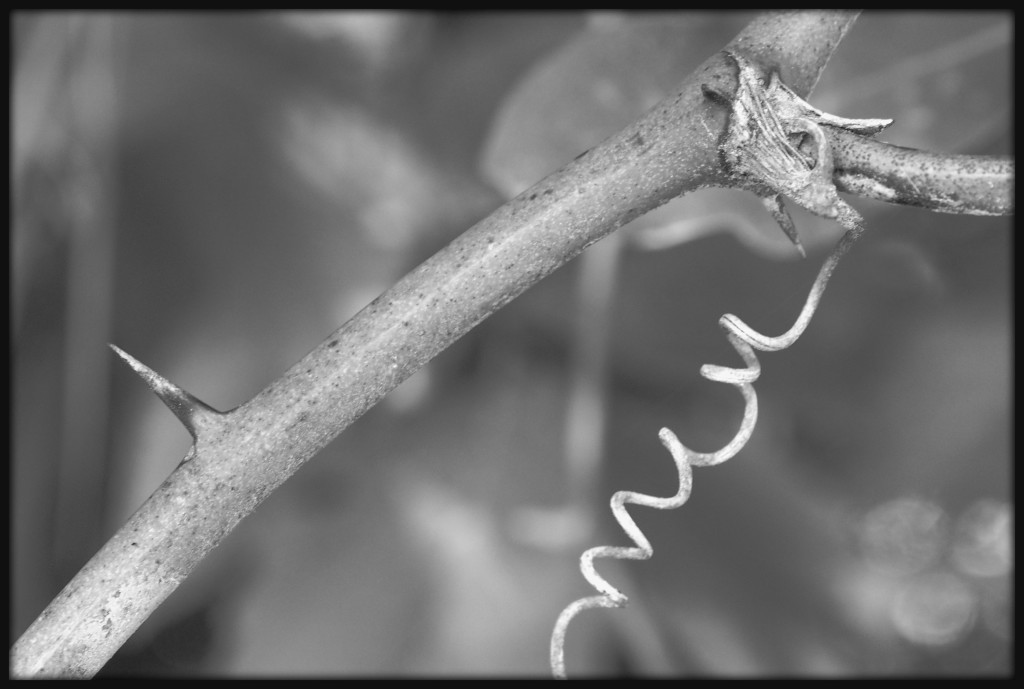
On this milestone day, I celebrate the utterly commonplace — a muscadine grape leaf framed against the summer sky, somewhere (practically anywhere) along Piney Woods Church Road. I am thankful for the miles I have traveled, and expectant and excited about the journey that still lies ahead.
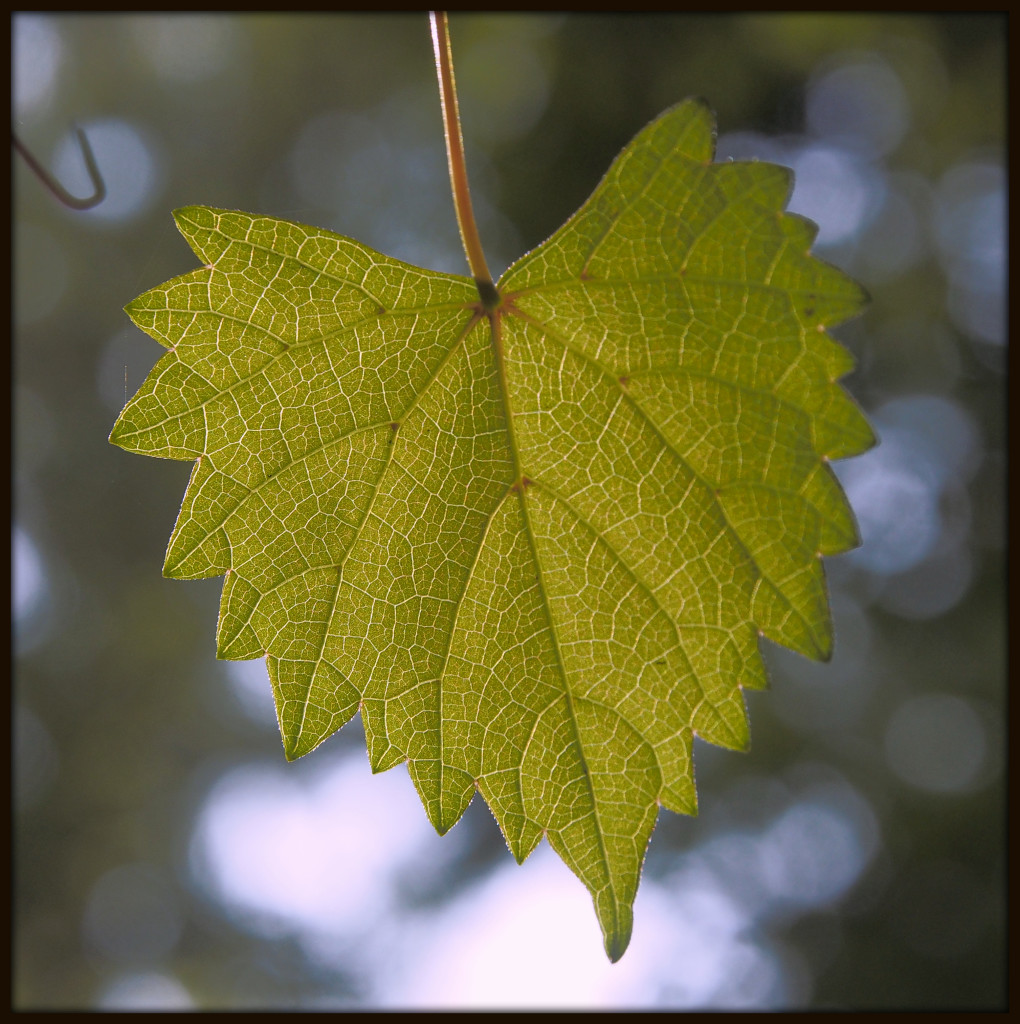
A friend and Piney Woods Church Road resident reminded me yesterday afternoon that I have taken very few photographs of the road itself, for all my travels upon it. This photograph does not actually remedy that situation, though a few other tulip poplar photos I took this morning do include the road edge. It does add to the small collection of landscape photographs I have taken on my journey, reminders that all wonders are not on the macro scale, hidden under leaves or among the threads of a spider’s web. This aged tulip poplar, scarred by a past lightning strike, greets me every day on my pilgrimage. This post is dedicated to Mark Hirsch, whose work with That Tree helped inspire the Piney Woods Church Road Project.
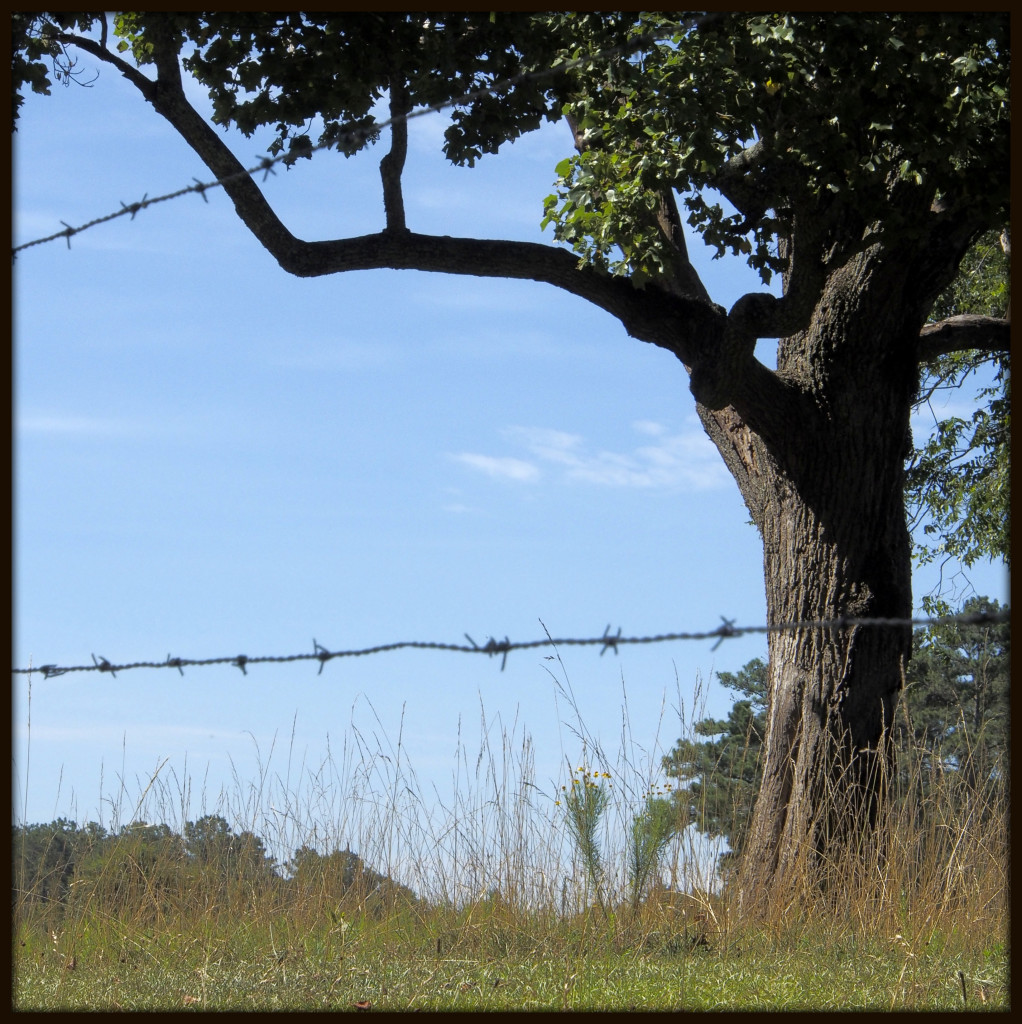
Lately I have spent many mornings and late afternoons photographing leaves illumined by sunlight. I have posted relatively few of them, by comparison. In this case, I find delight in the way the late-day sun has touched and transformed a single new leaf of a greenbrier. Beautiful.
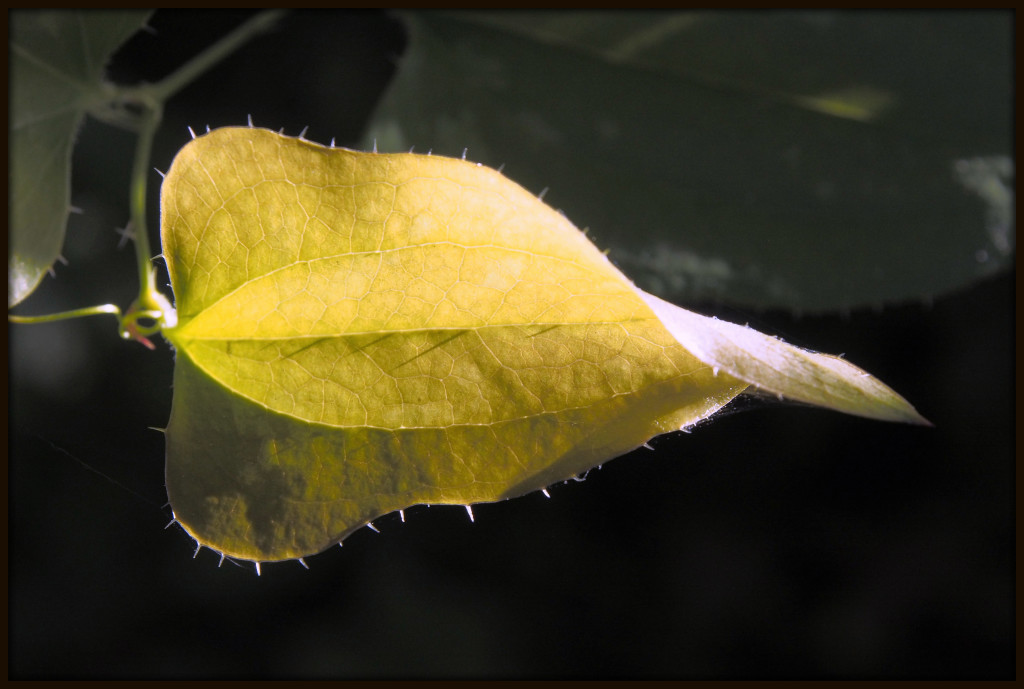
Walking along the woods’ edge on Rico Road this morning, I glimpsed a pair of huge white flowers with purple centers, perhaps four inches across, on a vine with heart-shaped leaves. The flowers were at head height, on a vine hanging from tree branches. They looked like blooms that belonged in a tropical rainforest somewhere.
A member of the morning glory family (Convolvulaceae), the Wild Sweet Potato (Ipomoea pandurata) is native to much of the Eastern United States, despite it exotic appearance. The bulb of the vine is described by an Illinois wildflowers website as being “edible (barely) when cooked”, and was evidently eaten by Native Amerindians, according to the same source. Cooking was clearly essential; the Peterson Field Guide to Edible Wild Plants of Eastern and Central North America notes that roots have purgative properties if eaten raw.
For my own part, I think I will be satisfied with appreciating the stunning flowers.
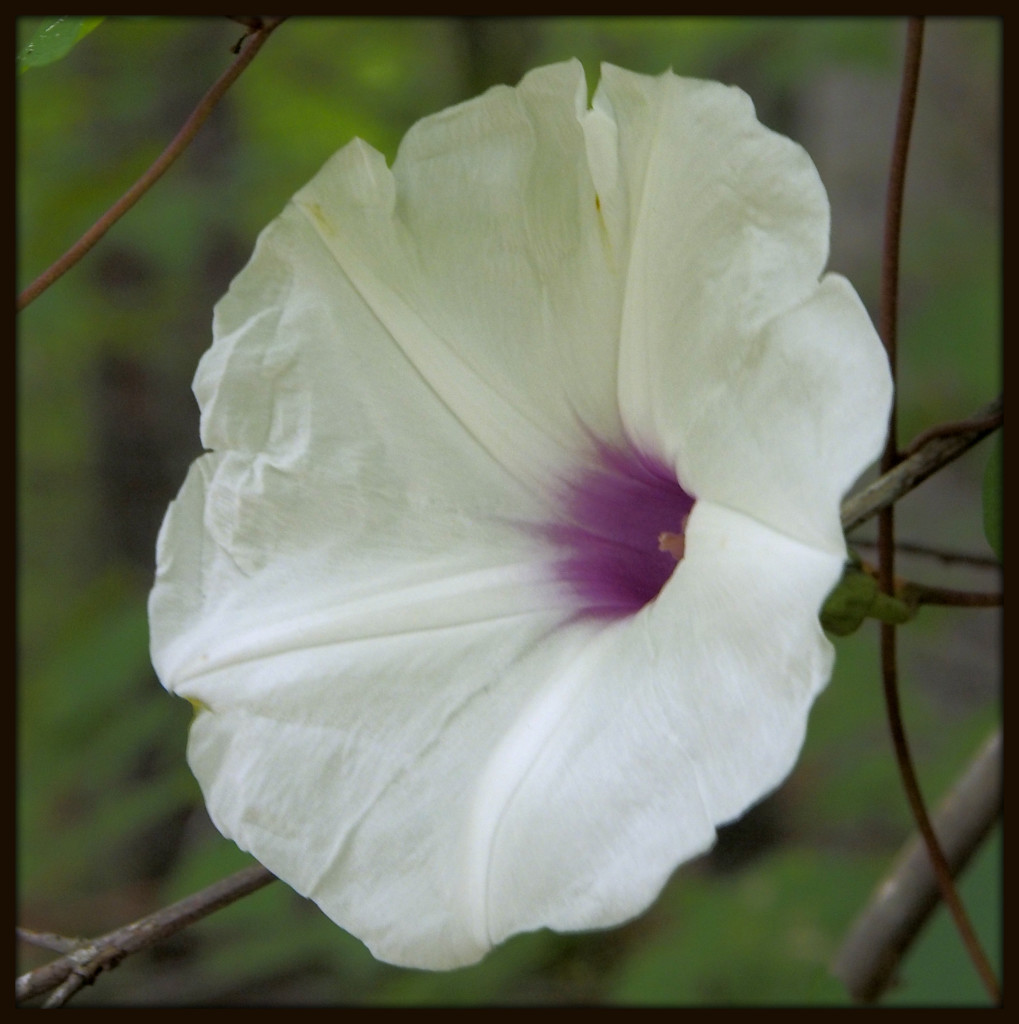

I can’t get enough of Wood Oats (Chasmanthium latifolium). Perhaps it is because oats have been my favorite grain since childhood. Or maybe it is because Wood Oats growing in a forest remind me of Sea Oats growing along an ocean coast. Or maybe it is simply because the seed heads are so beautiful when the morning sun shines through them.
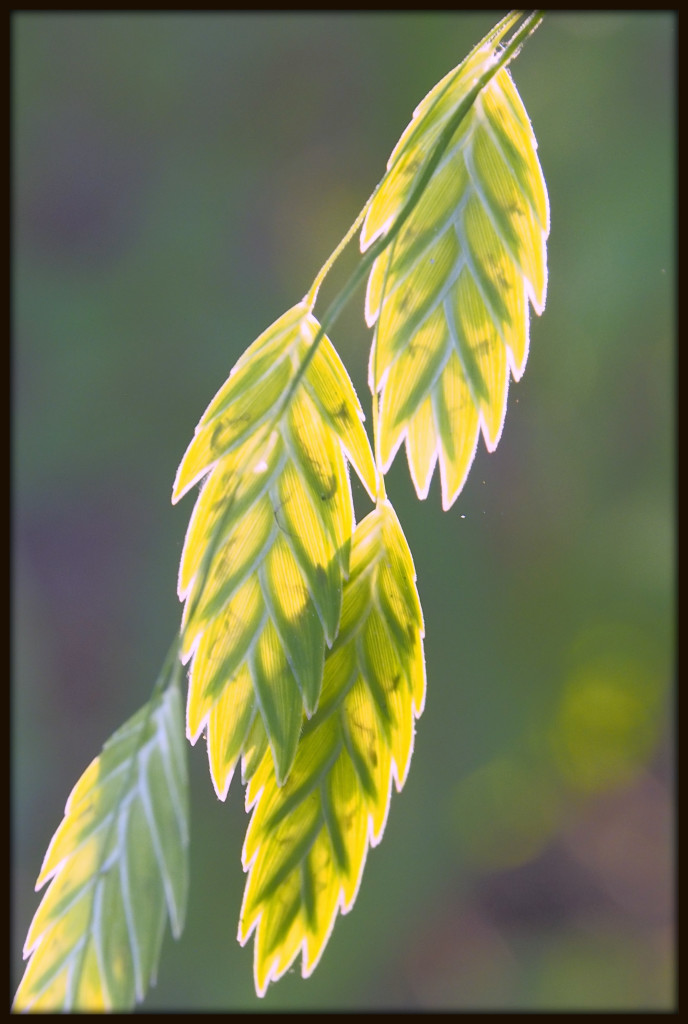
So little is in bloom along Piney Woods Church Road this time of year. I glimpsed one Horse Nettle, and a few bedraggled Daisy Fleabanes. But then, along the woodland edge near Rico Road, I noticed one bright yellow eight-petaled flower. It is a sunflower, a member of the genus Helianthus, and quite possibly the Stiff-Haired Sunflower(Helianthus hirsutus). To make the identification a bit more difficult, there are actually twenty-eight different species of Helianthus native to Georgia! No matter its species, it was a burst of sunlight on my walk, a bit of yellow in a sea of green.
